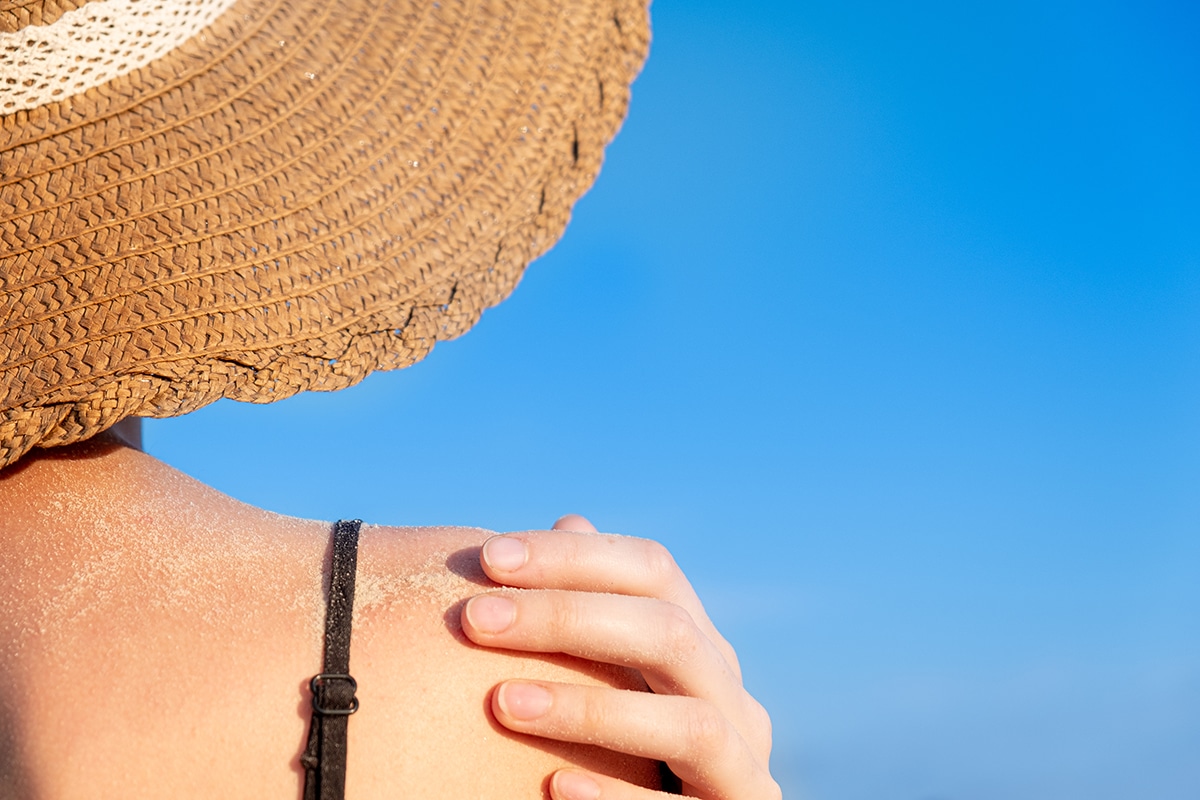While it is true that the sun is an undeniable source of life and energy for our planet, it also has a significant influence on our skin, which can be positive as long as it is not taken to extremes. As society moves towards a greater interest in health and well-being, awareness of the effects of the sun on the skin has become more relevant than ever.
In this article, we will be exploring in depth the impacts that sun exposure can have on our skin, both positive and negative, so that you can ensure you enjoy your summer vacation responsibly, avoiding risks that can affect your skin due to overexposure to the sun.
Do you need medical attention to treat any skin condition caused by sun exposure? At Formé Medical Center, we have the appropriate medical staff to help you obtain an accurate diagnosis and the ideal treatment for complete recovery.
Call us now at 914-723-4900 or schedule an appointment with us so we can take care of you and ensure your health with a 100% qualified professional team to provide you with the best care.
What are the effects of the sun on the skin?
The effects of the sun on the skin are diverse and can have both significant benefits and risks. On the one hand, controlled sun exposure stimulates the production of vitamin D in our skin, an essential nutrient for maintaining strong bones and a healthy immune system.
In addition, sunlight has anti-inflammatory properties that can help improve certain skin conditions, such as acne and psoriasis. Likewise, melanin, the pigment responsible for tanning, acts as a natural defense against ultraviolet rays, providing some protection to the skin, not to mention that sunlight can have positive effects on our emotional well-being, as it promotes the release of endorphins, improving our mood.
However, too much of anything is bad, and this case is no exception. Excessive and unprotected sun exposure can have harmful consequences for our skin. Ultraviolet rays can damage collagen and elastin fibers in the skin, leading to premature aging, manifested in wrinkles, expression lines, and sagging, as well as diseases that can be extremely serious.
Benefits of Sun Exposure for Skin
As mentioned before, controlled and responsible sun exposure can offer several benefits for the skin. Here are five of them:
Production of vitamin D: Sun exposure stimulates the production of vitamin D in our skin, an essential nutrient for bone health and proper immune system function. Vitamin D helps absorb calcium, which is vital for maintaining strong and healthy bones.
Improvement of skin conditions: Sunlight has anti-inflammatory properties that can help improve certain skin conditions such as acne, psoriasis, and eczema. Ultraviolet light can reduce inflammation and promote skin healing.
Radiance and vitality: Moderate sun exposure can give the skin a more radiant and healthy appearance. Melanin, the pigment responsible for tanning, protects the skin from damage caused by solar radiation and can give it a healthy glow.
Mood improvement: Sunlight promotes the release of endorphins and serotonin, neurotransmitters that are associated with feelings of well-being and happiness. Spending time outdoors in the sun can improve mood and reduce stress.
Regulation of circadian rhythm: Sun exposure during the day helps regulate our biological clock and sleep-wake cycle. Sunlight in the morning and afternoon helps maintain an appropriate circadian rhythm, which can improve sleep quality and contribute to better rest.
It is important to note that while the sun can be beneficial for the skin in appropriate doses, it is essential to protect yourself from excessive exposure and use sunscreen to prevent risks associated with ultraviolet radiation.
Risks of overexposure of the skin to sunlight
While there are benefits, there are also risks associated with the effects of the sun on the skin that you should be aware of to avoid permanent damage. Here are 5 of the most common risks of prolonged sun exposure.
Sunburn: Overexposure to UV rays can cause sunburn, a painful condition characterized by redness, inflammation, and blisters on the skin. Sunburn increases the risk of cellular damage and contributes to premature aging of the skin.
Premature aging: Sun’s UV rays can damage collagen and elastin fibers in the skin, leading to a loss of elasticity and the appearance of wrinkles, fine lines, and dark spots. Excessive and prolonged exposure accelerates skin aging, resulting in a more aged and worn-out appearance.
Increased risk of skin cancer: Chronic sun exposure, especially without protection, increases the risk of developing skin cancer. UV rays can damage the DNA of skin cells, leading to the formation of cancerous cells. The most common types of skin cancer are basal cell carcinoma, squamous cell carcinoma, and melanoma.
Hyperpigmentation and sunspots: Overexposure to the sun can lead to excessive production of melanin in certain areas of the skin, resulting in dark spots or hyperpigmentation. These sunspots are more common in exposed areas such as the face, shoulders, and hands.
Eye damage: Overexposure to ultraviolet radiation can also damage the eyes. UV rays can increase the risk of cataracts and macular degeneration, two eye conditions that can affect long-term vision.
To protect your skin from these risks, it is crucial to adopt safe sun exposure practices such as using broad-spectrum sunscreen, wearing protective clothing and sunglasses, and seeking shade during peak sun intensity hours. Prevention is key to maintaining healthy skin and protecting yourself from the dangers of the sun.
What are the hours when taking sun exposure poses greater risk?
The hours when taking sun exposure poses greater risk are those when solar radiation is most intense, which increases the likelihood of skin and eye damage. These moments are known as “peak hours” of ultraviolet (UV) radiation and usually occur between 10 a.m. and 4 p.m. During this period, the sun is at its highest point in the sky, which means that UV rays have a shorter path through the atmosphere and are more direct in their impact on the Earth’s surface.
It is important to note that the intensity of UV rays also varies depending on geographical location, altitude, and weather conditions. Therefore, even on cloudy or cool days, UV rays can still be harmful to the skin. It is recommended to avoid direct sun exposure during peak intensity hours and seek shade whenever possible.
If it is necessary to be outdoors during these hours, it is essential to use broad-spectrum sunscreen, protective clothing, and sunglasses to minimize the risk of skin and eye damage.
How to protect my skin from sunlight?
Protecting your skin from sunlight is essential to prevent harmful effects and keep it healthy. Here are some measures to protect your skin:
Use sunscreen: Apply broad-spectrum sunscreen with a sun protection factor (SPF) of at least 30, even on cloudy days. Make sure to cover all exposed areas of the skin and reapply every two hours or after swimming or sweating.
Seek shade: Avoid direct sun exposure during peak UV radiation hours, i.e., between 10 a.m. and 4 p.m. Seek shade under trees, umbrellas, or covered structures.
Use protective clothing: Wear light-colored and dense fabric clothing that covers most of your body. Clothing with built-in UV protection is an excellent option for added safety.
Protect your eyes: Wear sunglasses that block at least 99% of UV rays to protect your eyes and the skin around them. This will help prevent cataracts and other eye problems related to sun exposure.
Avoid tanning beds: Tanning beds emit UV rays that can damage the skin and increase the risk of skin cancer. It is better to obtain a gradual and safe tan outdoors or through self-tanning products.
Hydration: Keep your skin hydrated by drinking enough water and using moisturizing lotions or creams after sun exposure.
Protect children: Children have more sensitive skin, so it is important to protect them properly from the sun with clothing, hats, sunscreen, and keep them out of the sun during peak hours.
Remember that prevention is key to protecting your skin and keeping it healthy over time. Taking these precautions will help you enjoy the sun safely and reduce the risks associated with overexposure to sunlight.
You may also like: 5 reasons why it is important to have an annual physical exam
Formé Medical Center cares about your skin health
As you can see, the sun is a natural source of benefits for our skin, but it is also necessary to be aware of the risks associated with excessive exposure. Proper sun protection and responsible habits are essential to enjoy the benefits of the sun without compromising our skin health.
At Formé Medical Center, we are committed to your well-being and skincare. Our team of medical experts is ready to provide you with the necessary care and advice to maintain healthy and radiant skin.
If you need medical help for any condition related to your skin, do not hesitate to visit us at our medical center in New York. You can also call us at 914-723-4900 or schedule an appointment with us to learn more about how to protect your skin from sunlight and keep it in optimal condition.







